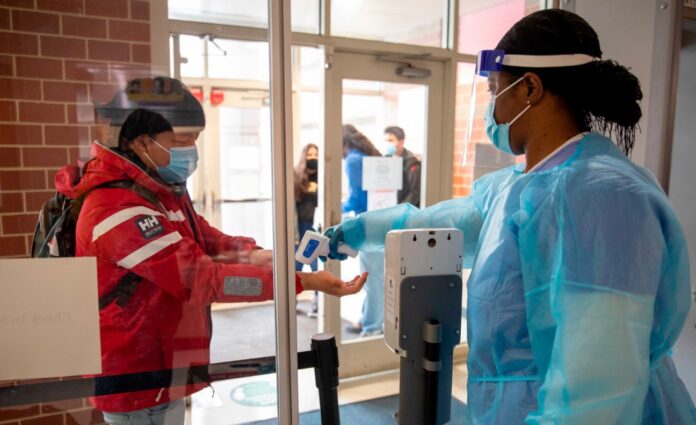The saying goes, “If it ain’t broke, don’t fix it.” But in the case of Washington, D.C.’s recent shakeup in how they handle school nurses, it seems more like they broke something that was functioning just fine.
Starting this 2023-2024 school year, the District has enacted a new “cluster” system for school nurses in its 112 public and 87 charter schools. Rather than maintaining the tried-and-true model of one nurse per school, this new system demands that licensed nurses rotate between four schools. This means kids might only see a qualified nurse once or twice a week. And these four schools? They might be public or charter, but they’re all “geographically close” — supposedly no more than a 10-minute drive apart.
While D.C. Councilmember Christina Henderson insists the program is about “consistency” and “quality care,” those on the front lines vehemently disagree. Deborah Thomas, an experienced nurse working with the District of Columbia Nurses Association (DCNA), paints a more distressing picture. Starting a new model, especially during the busy beginnings of a school year, is simply asking for chaos. And chaos is what they got.
The program’s glaring issues aren’t limited to mere logistical hiccups. We’re dealing with children’s health here, and the system was built without ensuring it met the best interests of the students. For instance, one example cluster forces RNs and LPNs to be responsible for almost 875 children each. With those numbers, giving specialized care, especially in emergencies, seems nearly impossible.
And speaking of emergencies, the introduction of “health technicians” in lieu of licensed nurses might actually be putting students in peril. Though these technicians might be more budget-friendly for the District (earning around $40,000 annually compared to the $61,000 for a school nurse), they lack the qualifications and training to act decisively in critical medical situations. Chronic conditions like asthma, allergies, and diabetes require immediate and knowledgeable care. Relying on a health tech to call a nurse during an asthma attack is like fumbling with a fire extinguisher while the building burns.
Yet, the District seems to be prioritizing cost-cutting over the welfare of its students. It’s a jarring shift from the commitment made in the 2017 Public School Health Services Amendment Act, which mandates a minimum of 40 hours per week for a nurse in each elementary and secondary public school.
But it’s not just the children feeling the heat. Long-standing nurses, like Myra Hines, who’ve dedicated decades to their schools and communities, now face abrupt displacements from their positions. Ripped away from routines, relationships, and responsibilities they’ve nurtured over the years, many of these professionals are confronting undue stress and emotional turmoil.
The DCNA isn’t taking this lying down. With a planned open forum in November, they’re rallying stakeholders from all corners — nurses, medical experts, the D.C. City Council, and concerned families — to voice their concerns and push for solutions. A prime suggestion? Address the glaring pay disparity for school nurses. It’s an investment that the city can afford, and our children surely deserve.
As the DCNA petition rightly highlights, we shouldn’t let financial considerations trump the welfare of our next generation. The question now is: Will D.C. prioritize student health, or will it continue its precarious balancing act with the well-being of its young citizens on the line?



